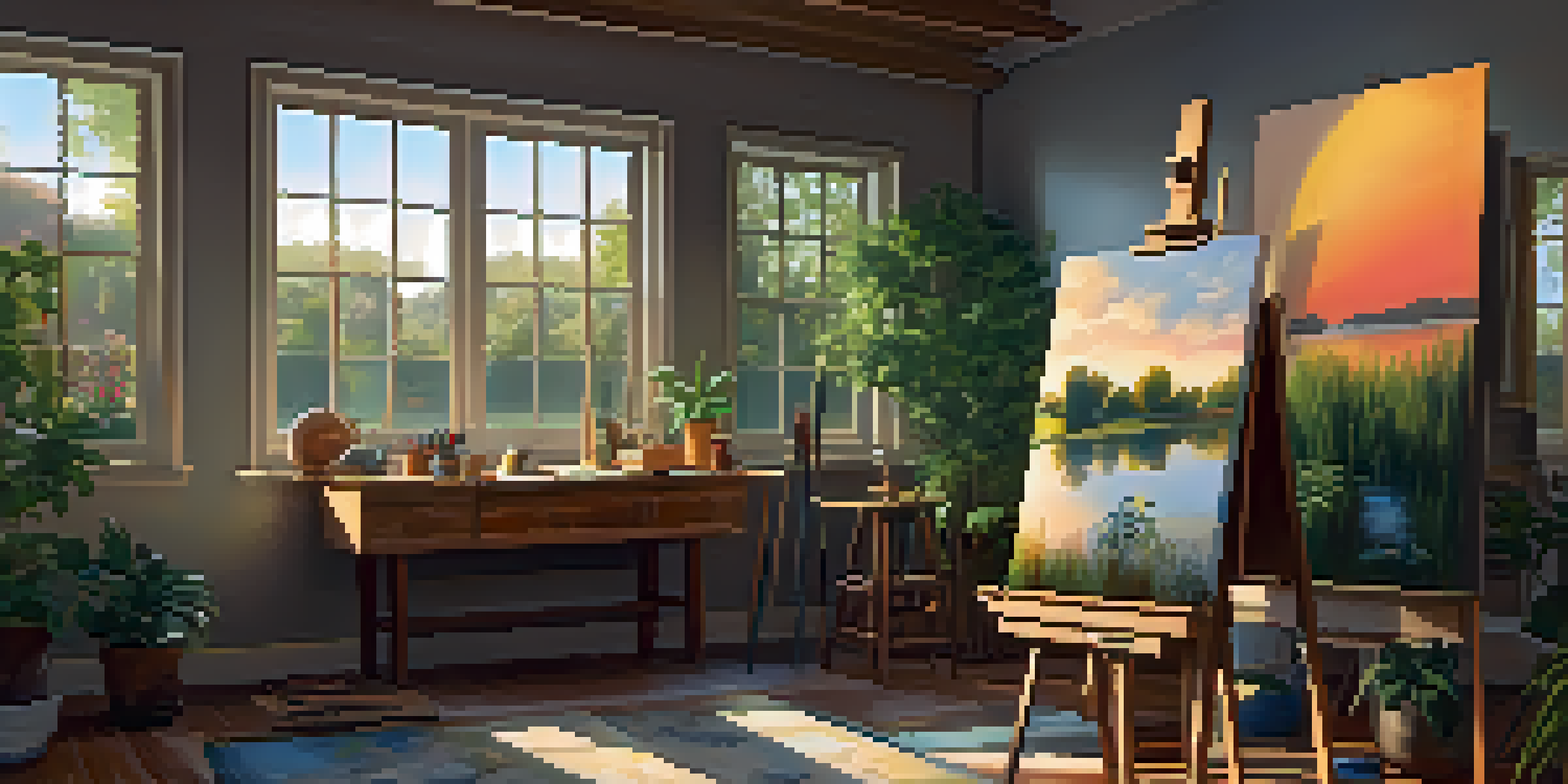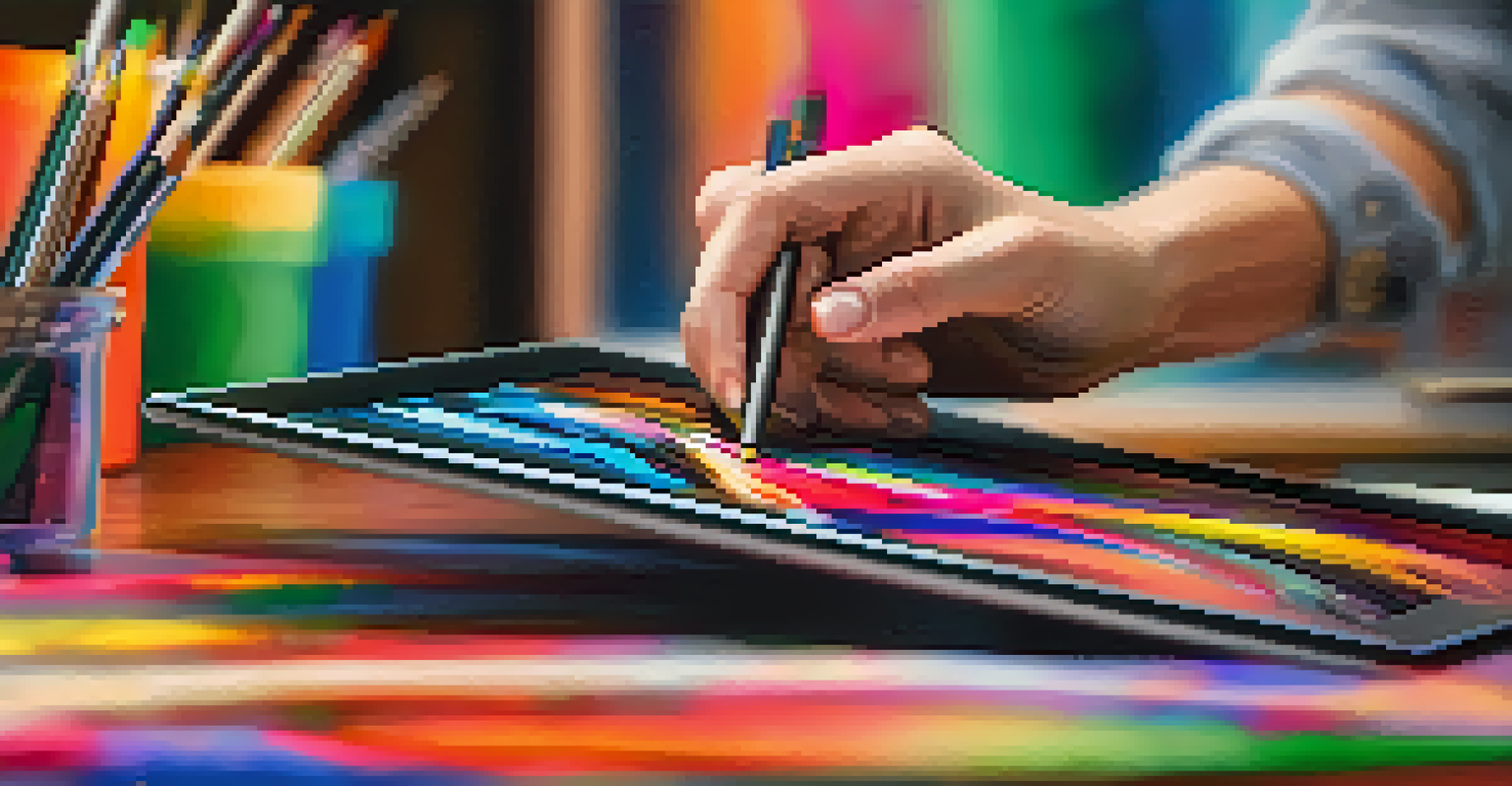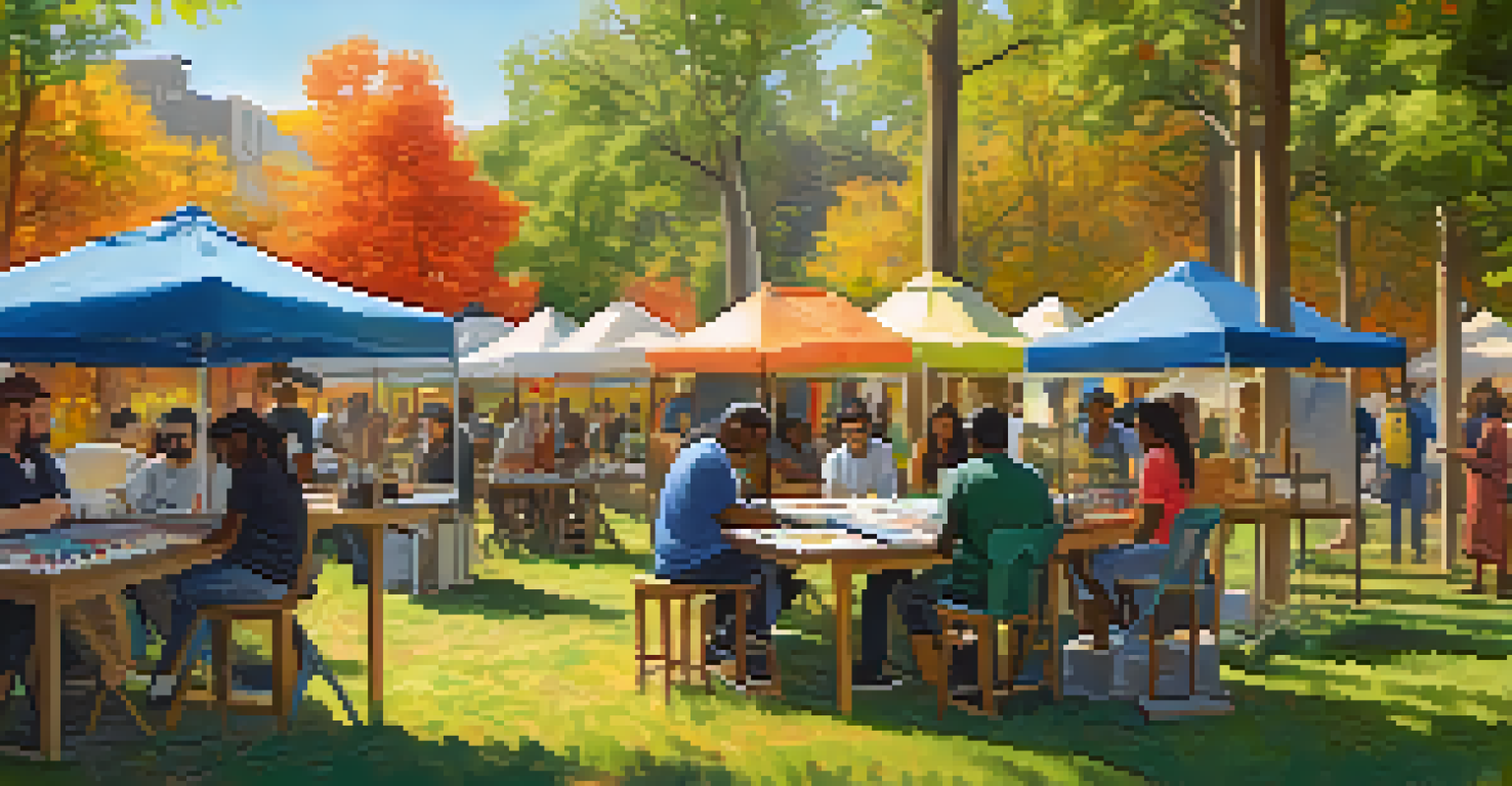Artificial Intelligence: A New Collaborator in Art Creation

Understanding AI's Role in Art Creation
Artificial Intelligence (AI) has evolved from a mere tool to a creative collaborator in art. It assists artists by generating ideas, suggesting compositions, and even producing entire works of art. This partnership allows for a level of experimentation and creativity that was previously unimaginable.
Art is not a thing, it is a way.
Think of AI as a brainstorming buddy, providing new perspectives and inspiration. Artists can input parameters or styles, and AI can generate numerous variations, allowing creators to explore avenues they might not have considered. This collaboration fosters innovation and keeps the creative juices flowing.
Moreover, AI can analyze vast amounts of data, learning from historical art movements and styles. By understanding patterns and trends, it can suggest contemporary approaches that resonate with audiences, making art creation a blend of past and future.
Examples of AI in Artistic Endeavors
Several artists and institutions have harnessed AI to push the boundaries of creativity. For instance, the AI program DeepArt transforms photographs into artwork in the style of famous painters. This not only highlights the technology's capabilities but also invites discussions about originality and authorship.

Another notable example is the collaboration between artists and AI algorithms in generating music or visual art. Projects like AICAN create pieces that mimic human creativity, raising questions about the role of the artist in a world where machines can create.
AI as a Creative Collaborator
AI enhances artistic expression by generating ideas and compositions, allowing artists to explore new creative avenues.
These examples illustrate that AI is not replacing artists but rather enhancing their capabilities. By providing new tools and perspectives, AI helps artists to evolve and expand their artistic horizons.
The Debate: Is AI Art Truly Art?
As AI continues to create art, a pressing question emerges: can AI-generated works be considered 'true' art? Some argue that art requires human emotion and intention, elements that AI lacks. However, others believe that the collaboration between human and machine can produce meaningful works.
Creativity is intelligence having fun.
This debate mirrors discussions about photography and digital art in their early days. Just as those forms of expression gained acceptance, AI-generated art is carving its niche in the contemporary art scene. The definition of art is constantly evolving, and AI is a part of that evolution.
Ultimately, the value of art may lie in its ability to evoke emotions and provoke thought, regardless of its origin. Whether created by human hands or generated by algorithms, the experience of art remains deeply personal.
AI as a Tool for Accessibility in Art
One of the most compelling benefits of AI in art is its potential to democratize creativity. With AI tools, individuals without formal training can create stunning visuals or music. This opens the door for diverse voices and perspectives that might have been overlooked in traditional art spaces.
Imagine a community workshop where anyone can experiment with AI to express their thoughts and feelings through art. This accessibility encourages collaboration and dialogue, fostering a sense of belonging and shared experience among participants.
Debate Over AI-Generated Art
The question of whether AI art can be considered 'true' art sparks discussions about the nature and definition of creativity.
As AI tools become more user-friendly and widespread, there's hope that art will become more inclusive, allowing greater participation from varied backgrounds. This shift could lead to a richer tapestry of artistic expression.
Challenges and Ethical Considerations of AI in Art
While AI offers exciting possibilities, it also presents challenges and ethical dilemmas. Questions around copyright, ownership, and the potential for plagiarism are at the forefront. Who owns an artwork created by an AI that was trained on existing pieces?
Additionally, there are concerns about the implications of relying on AI for creativity. Will it overshadow human artists or dilute the authenticity of art? It's crucial for artists and technologists to engage in ongoing conversations about these issues to navigate the complex landscape.
Addressing these challenges will require collaboration among artists, legal experts, and technologists to establish guidelines that protect creativity while embracing innovation. The dialogue around AI and art is just beginning, and it's essential to ensure fairness in this evolving partnership.
The Future of Art in an AI-Driven World
As we look to the future, the integration of AI in art creation is likely to deepen. We can expect to see more collaborations between artists and AI, resulting in unique hybrids that challenge our understanding of creativity. The art world is on the brink of an exciting transformation.
Imagine museums showcasing AI-generated art alongside traditional masterpieces, inviting viewers to contemplate the intersections of technology and human expression. This could redefine how we experience and appreciate art, creating new narratives around creativity.
AI's Role in Artistic Accessibility
AI democratizes art creation, enabling individuals without formal training to express themselves and fostering diverse artistic voices.
Ultimately, the future of art will likely be a blend of human intuition and AI precision. This collaboration holds the potential to enrich our cultural landscape, sparking fresh ideas and inspiring new generations of artists.
Embracing AI as a Creative Partner
To fully appreciate the role of AI in art, we must embrace it as a creative partner rather than a competitor. Artists who experiment with AI can unlock new dimensions in their work, enhancing their creative processes. This partnership encourages exploration and innovation.
By viewing AI as an ally, artists can push their boundaries and discover untapped potential. The synergy between human creativity and machine learning can lead to unexpected outcomes that challenge traditional artistic conventions.

As we continue to explore this collaboration, it's essential for artists to remain open-minded and curious. The art world is evolving, and those who embrace change will find themselves at the forefront of a new creative era.